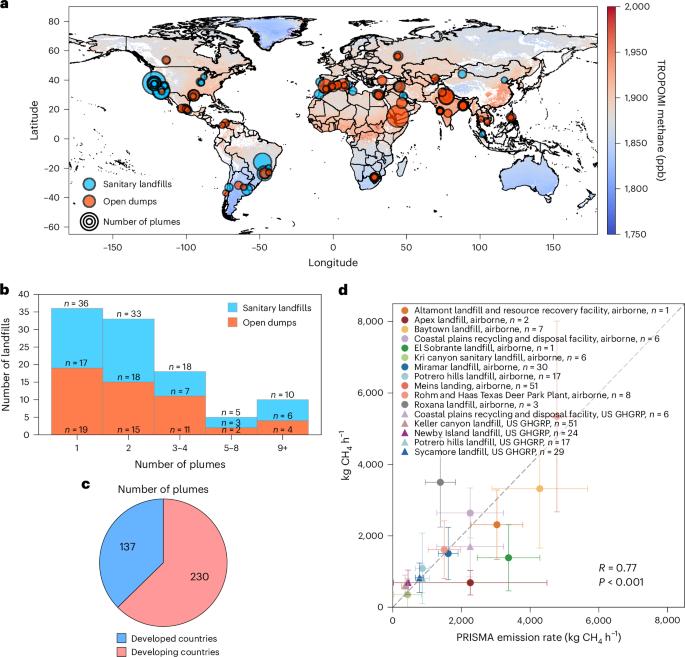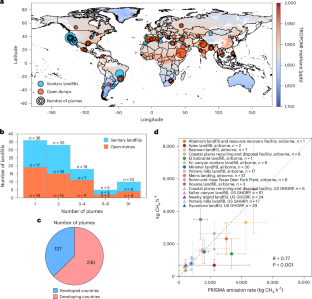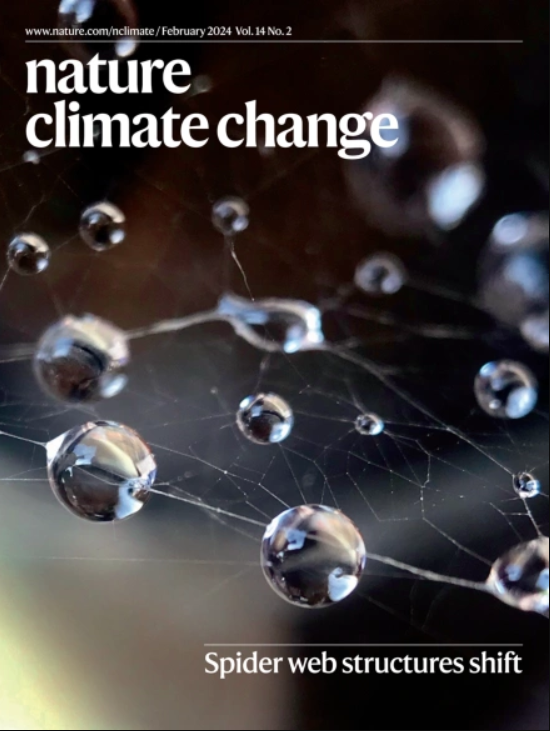透过改善堆填区管理,减少甲烷排放
IF 27.1
1区 地球科学
Q1 ENVIRONMENTAL SCIENCES
引用次数: 0
摘要
垃圾填埋场的固体废物不断排放甲烷,已成为全球第三大人为甲烷排放源。由于废物管理做法和气候条件等因素,垃圾填埋场的甲烷排放表现出很大的变化。在这里,我们利用5年的卫星观测,评估了全球102个高排放垃圾填埋场在不同管理策略和气候条件下的甲烷排放。我们发现,在EDGAR v8.0清单中,这些地点的露天垃圾场的总甲烷排放量被低估了5.3±0.3倍。将世界各地的露天垃圾场转变为卫生填埋场,同时将有机废物转化为堆肥和生物沼气池,可减少80%(60-89%)的甲烷排放,每年可提供760(570-850)公吨二氧化碳当量的减排潜力。这些结果突出表明,在经济和技术措施的支持下,优先改善发展中国家的废物管理,是减少固体废物部门甲烷排放的最有效战略之一。本文章由计算机程序翻译,如有差异,请以英文原文为准。


Reduction of methane emissions through improved landfill management
Solid waste in landfills continuously emits methane, which has become the third-largest anthropogenic source of methane emissions globally. The methane emissions from landfills exhibit substantial variability due to factors such as waste management practices and climatic conditions. Here we assessed methane emissions from 102 high-emitting landfills worldwide under different management strategies and climate conditions using 5 years of satellite observations. We find that, for these sites, total methane emissions from open dumps are underestimated by a factor of 5.3 ± 0.3 in the EDGAR v8.0 inventory. Transforming open dumpsites worldwide into sanitary landfills, while diverting organic waste to composters and biodigesters, can decrease methane emissions by 80% (60–89%), offering a mitigation potential of 760 (570–850) Mt CO2e annually. These results highlight that prioritizing improved waste management in developing countries, supported by economic and technological measures, represents one of the most effective strategies for mitigating methane emissions from the solid waste sector. Solid waste disposal is a major source of anthropogenic methane, yet estimating these emissions is difficult. Here the authors use satellite data to assess emissions from high-emitting landfills and find that transforming open sites to sanitary landfills could offer a large mitigation potential.
求助全文
通过发布文献求助,成功后即可免费获取论文全文。
去求助
来源期刊

Nature Climate Change
ENVIRONMENTAL SCIENCES-METEOROLOGY & ATMOSPHERIC SCIENCES
CiteScore
40.30
自引率
1.60%
发文量
267
审稿时长
4-8 weeks
期刊介绍:
Nature Climate Change is dedicated to addressing the scientific challenge of understanding Earth's changing climate and its societal implications. As a monthly journal, it publishes significant and cutting-edge research on the nature, causes, and impacts of global climate change, as well as its implications for the economy, policy, and the world at large.
The journal publishes original research spanning the natural and social sciences, synthesizing interdisciplinary research to provide a comprehensive understanding of climate change. It upholds the high standards set by all Nature-branded journals, ensuring top-tier original research through a fair and rigorous review process, broad readership access, high standards of copy editing and production, rapid publication, and independence from academic societies and other vested interests.
Nature Climate Change serves as a platform for discussion among experts, publishing opinion, analysis, and review articles. It also features Research Highlights to highlight important developments in the field and original reporting from renowned science journalists in the form of feature articles.
Topics covered in the journal include adaptation, atmospheric science, ecology, economics, energy, impacts and vulnerability, mitigation, oceanography, policy, sociology, and sustainability, among others.
 求助内容:
求助内容: 应助结果提醒方式:
应助结果提醒方式:


